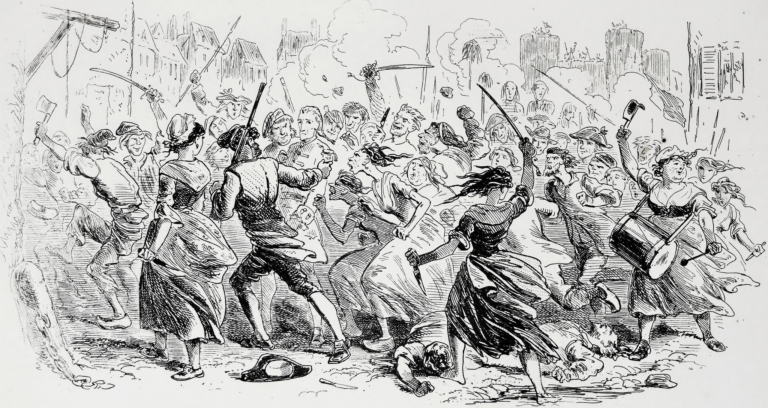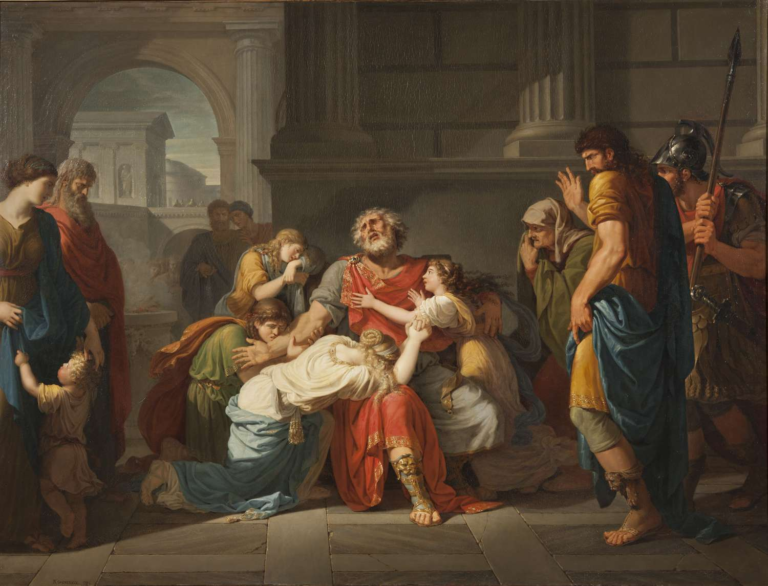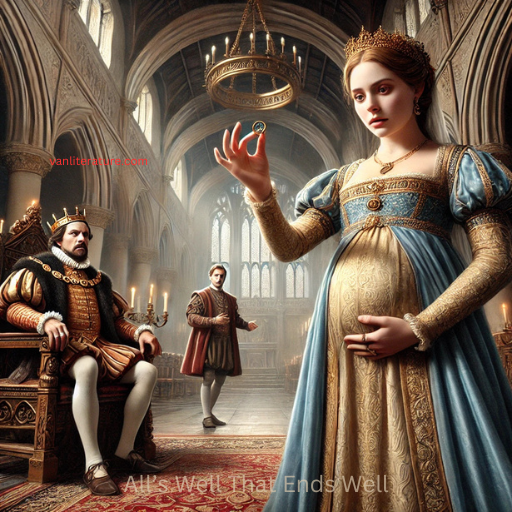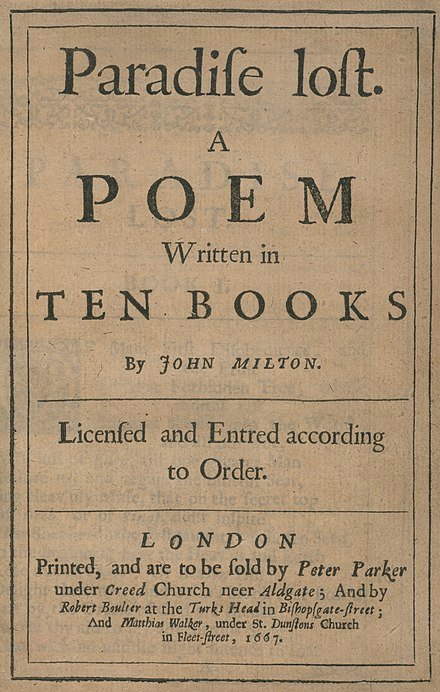Chaucer’s Masterpiece ‘The Canterbury Tales’-A Vibrant Pilgrimage of Diversity and Satire
Introduction to The Canterbury Tales
Geoffrey Chaucer’s The Canterbury Tales is a literary masterpiece that provides a vivid glimpse into the society and culture of 14th-century England. The opening section of this work, known as the Prologue, sets the stage for the storytelling pilgrimage that forms the core of the narrative. In this blog post, we’ll delve into the Prologue, explaining its key elements and significance.
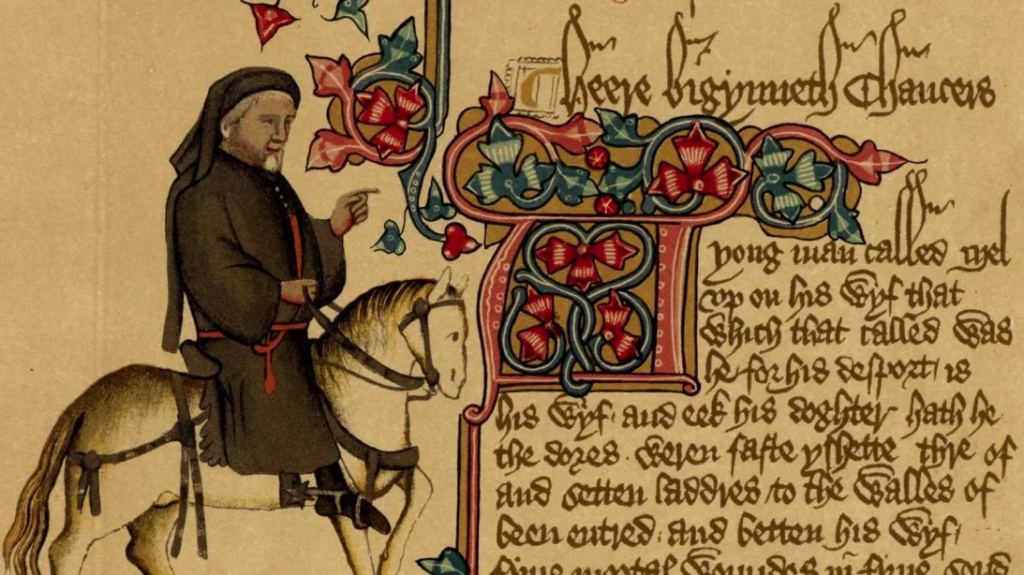
The Arrival of Spring
Chaucer begins the Prologue to The Canterbury Tales by vividly describing the time of year: April, a season of rebirth and renewal. He writes, “In April, when the sweet showers fall,” painting a picture of gentle rain showers that nourish the earth and coax forth the blossoming of flowers. This introduction not only sets the scene but also establishes a thematic connection between the natural world and human activities, hinting at the idea of spiritual renewal.
Chaucer continues to extol the virtues of spring, explaining how the west wind, or Zephyr, and the warming sun awaken the land. This description is more than just poetic; it’s symbolic. The revival of nature mirrors the spiritual awakening and rejuvenation that the characters on this pilgrimage seek to experience.
Pilgrimage as a Spiritual Journey
In the next part of the Prologue The Canterbury Tales, Chaucer introduces the concept of a pilgrimage. Pilgrimages were common in Chaucer’s time, involving a journey to a holy site or shrine for religious reasons. The characters in The Canterbury Tales are embarking on a pilgrimage to Canterbury, a city in England famous for its cathedral and the shrine of Thomas Becket, a martyred archbishop. Pilgrimage represents a quest for spiritual growth and forgiveness, and Chaucer uses it as a backdrop for the larger narrative.
The Term “Palmer”
Chaucer mentions “palmers” among the pilgrims. Palmers were pilgrims who had completed the arduous journey to the Holy Land, often bringing back palm branches as symbols of their pilgrimage. This term adds depth to the diversity of pilgrims on this journey, as it suggests a range of pilgrimage experiences and backgrounds among the characters.
Introduction of Characters
The heart of the Prologue lies in Chaucer’s introduction of the pilgrims themselves. He paints a rich tapestry of characters from various social classes, occupations, and walks of life. These include a Knight, a Prioress, a Monk, a Friar, a Merchant, a Clerk, and many more. Chaucer offers brief but telling descriptions of each character, revealing their appearances, behaviours, and personalities.
Satire and Critique
In The Canterbury Tales Chaucer’s descriptions of the pilgrims go beyond mere character sketches. He employs satire and humour to critique the societal norms and stereotypes of his time. For example, his portrayal of the Prioress, who displays a worldly attitude, raises questions about the true nature of religious devotion. Chaucer’s commentary on the characters is often subtle and invites readers to reflect on the complexities of human nature.
Chaucer as the Narrator
Notably, Chaucer himself is one of the pilgrims in The Canterbury Tales. As the narrator, he is observant and provides insight into the other characters. His presence adds depth to the storytelling, as he becomes a character within the narrative.
The Frame Story
The Canterbury Tales is not just a collection of stories but a frame story within which the individual tales are told. The Prologue serves as the frame for this narrative structure, setting up the premise for the tale-telling contest that unfolds during the pilgrimage. Each character will tell two tales on the way to Canterbury and two more on the way back, with the best storyteller winning a prize. This structure allows Chaucer to explore a wide range of stories, each reflecting different aspects of medieval life and culture.
Each tale is a window into the storyteller’s values, personality, and worldview, providing rich commentary on love, power, morality, and human behaviour. Among the many tales, those told by the Knight, the Wife of Bath, the Pardoner, and the Miller stand out for their unique perspectives and timeless themes.
The Knight’s Tale
The Knight’s tale is a grand narrative of chivalry, rivalry, and love set in ancient Athens. It follows two knights, Palamon and Arcite, who are imprisoned by Duke Theseus. Both fall in love with Emily, Theseus’ sister-in-law, sparking a fierce rivalry. Arcite returns in disguise to serve in Theseus’ court, and Palamon eventually challenges him to a duel.
Theseus organizes a tournament to settle their feud. Arcite wins but tragically dies after a fall, allowing Palamon to marry Emily. This tale explores themes of destiny, honor, and courtly love, reflecting the Knight’s ideals of nobility and chivalry in medieval society.
The Wife of Bath’s Tale
The Wife of Bath’s tale offers a bold exploration of gender dynamics and the power struggles within marriage. It tells the story of a knight who, after committing a grave offense, is sentenced to discover what women truly desire. After a year-long quest, he learns from an old woman that women seek sovereignty over their husbands.
In return for her answer, the knight agrees to marry the old woman. When he allows her to choose her fate, she transforms into a young, faithful wife. This tale underscores themes of autonomy, respect, and mutual understanding, mirroring the Wife of Bath’s confident and unconventional approach to relationships.
The Pardoner’s Tale
The Pardoner’s tale is a grim allegory that critiques greed and hypocrisy. It follows three men who set out to confront Death after hearing of a friend’s demise. An old man directs them to an oak tree, where they discover gold instead. Overcome by greed, they plot against one another, leading to their mutual destruction.
This moral tale highlights the destructive nature of avarice, delivered ironically by the Pardoner, whose own life is marked by deceit and corruption. It is a biting commentary on the moral failings of individuals, particularly within the church.
The Miller’s Tale
The Miller’s tale is a bawdy and comedic story of love and deception. It centers on Alisoun, the wife of a carpenter, who has affairs with Nicholas, a scholar, and Absolon, a parish clerk. Nicholas tricks the carpenter into believing a flood is imminent, allowing him and Alisoun to be together.
Absolon, seeking revenge after being spurned, attempts to kiss Alisoun but is humiliated instead. The tale ends in chaos and laughter at the carpenter’s expense. This lively story, filled with wit and irreverence, reflects the Miller’s coarse humor and his connection to the working class.
Conclusion
Through these tales, Chaucer paints a vivid portrait of medieval life, with its virtues, flaws, and intricacies. From the Knight’s ideals of nobility to the Wife of Bath’s challenge to societal norms, and from the Pardoner’s cautionary message to the Miller’s crude humor, each tale offers a unique perspective. Together, they form a rich tapestry that continues to captivate readers, offering timeless insights into the human condition.

